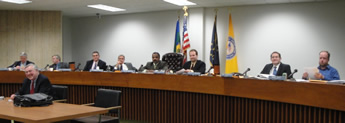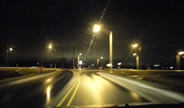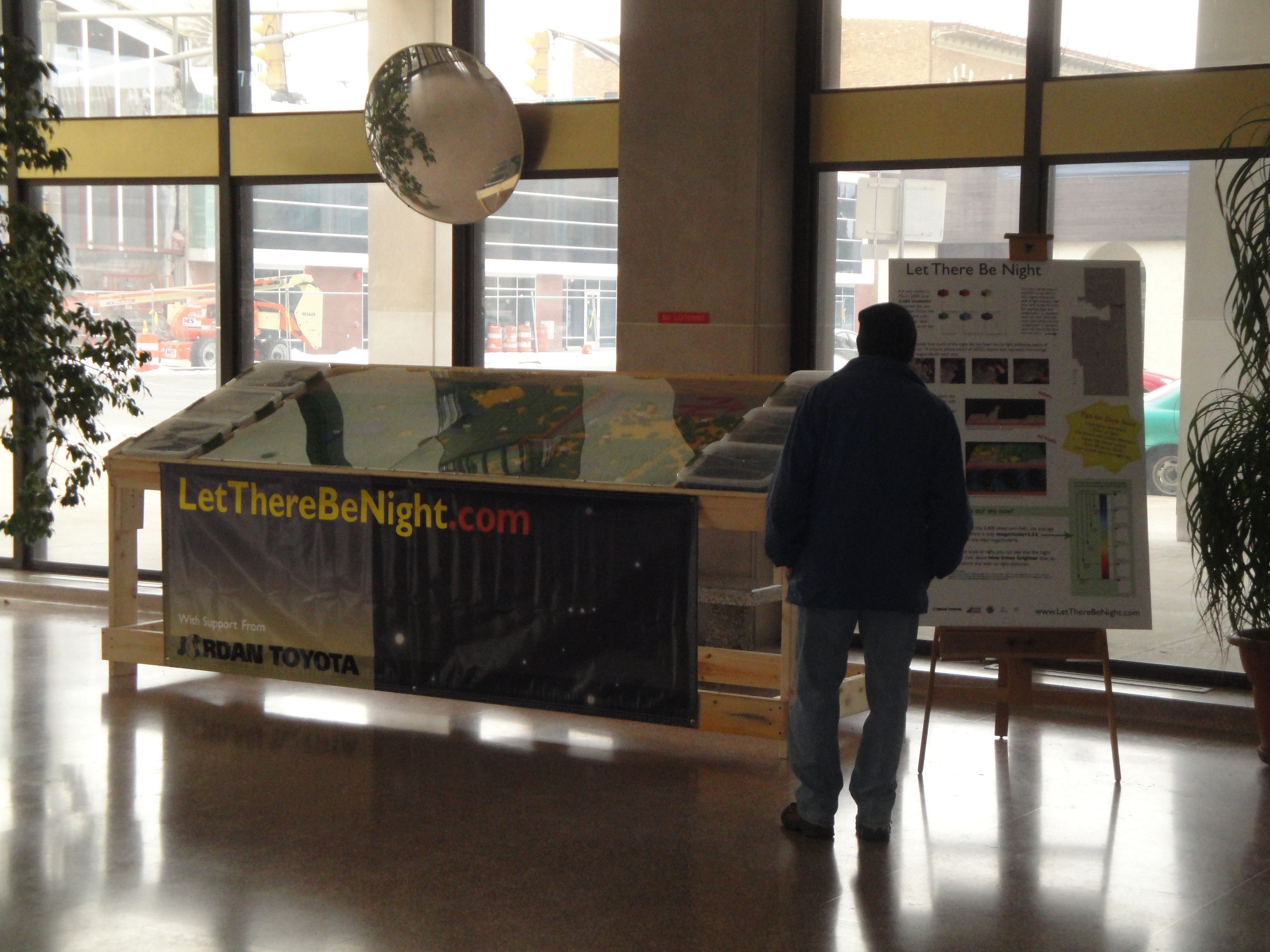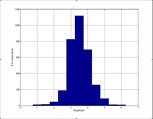 SJC Council Hears LTBN Results
SJC Council Hears LTBN Results
Chuck Bueter shared results of the Let There Be Night experiment with members fo the St. Joseph County Council on February 9, 2010. In a packet given to each Council Member were the six star charts of Orion with corresponding LEGO color; a copy of the display poster that accompanied the LTBN exhibit; a stack of six colored LEGO blocks; a hard copy of the Viewpoint editorial cited below; and a flyer announcing the Manmade Light at Night symposium on March 11, 2010.
Council Members were told the observations of over 3,400 St. Joseph County students suggest the average observed magnitude is now 3.5, which indicates the night sky is typically nine times brighter than a natural sky. That is the equivalent of discarding the black, blue, and half of the green blocks in the stacks given to them.
Several local outdoor lighting applications merited compliments, including SJC road improvements on Cleveland Road at Hickory and at Bittersweet Roads. Bueter noted the County is exempt from its own lighting ordinance, Articlae 8.08.02, and suggested Council needs to be proactive with county installations and with projects the Council approves, insisting on lighting that minimizes light pollution.
Viewpoint Highlights St. Joseph County Issues and Solutions
An editorial in the South Bend Tribune describes the adverse effects of light pollution on St. Joseph County residents; cites local success stories about developers and the County installing good outdoor lighting; notes the savings of taxpayer dollars by other Indiana municipalities; and suggests the role of the St. Joseph County Council in requiring fully-shielded, downward-pointing lighting fixtures. See "Light pollution takes its toll on sky--and pocketbook" by Chuck Bueter in the Viewpoint section of the South Bend Tribune on Friday, February 5, 2010.
From Viewpoint: "No laws mandate that local government bodies must act responsibly toward the night when they purchase outdoor lights. Rather, government officials (in fact, all of us) must be proactive in demanding light fixtures that minimize glare, light trespass and sky glow. Choose to be good stewards of the public easement overhead, and fiscal responsibility ensues."
Good Lighting By Choice in SJC

St. Joseph County and private developers have shown you can have good outdoor lights that serve the public's need for safety, security, and aesthetics. Recent examples in St. Joseph County include road improvements on Cleveland Road (left); parking lot lights at Toscana Park (right) and St. Joseph Regional Medical Center; all outdoor lighting at the St. Pius X Parish Education Center; and the streetlights throughout Eddy Street Commons. When made aware of the issues, developers often choose outdoor lighting that is more friendly to the human eye.
Indiana Municpalities Save Taxpayer Dollars
A TV report cites the savings of taxpayer dollars by Indiana municipalities that are struggling to reign in budget shortcomings. Though the governments of Muncie, Merrillville, and Valparaiso originally sought to save money through less electrical consumption, a byproduct of turning off streetlights will be less light pollution. Not without controversy, the action cut tens of thousands of dollars from government spending.
 Model Conveys Results From 3,400+ Observations
Model Conveys Results From 3,400+ Observations
A team of students built a model of the results of the Let There Be Night experiment using over 35,000 LEGO blocks to represent the ideal night sky. From that 3D map, over 12,000 blocks had to be removed to represent the night sky lost to light pollution, according to over 3,400 student observations. The 3D model and display board (right) are exhibited at the County-City Bldg. in South Bend, IN, through February 15, 2010.
[From the LTBN Results page:]
Experiment Results Suggest Nine-Fold Loss of Night Sky

The histogram, left, suggests most of the remaining night sky levels in eastern St. Joseph County are about mag=3 to mag=4.5.The increase in brightness from an ideal sky (assuming mag=6) to the current sky (mag=3.53) is about 9 times from the observed sites.
Bottom line: the student data suggests the local night sky today is nine times brighter than what an ideal night sky should look like if there were no light pollution.
[From the LTBN Team page:]
SLT Members Meet With St. Joseph County Council
On March 24, 2009, five SLT members met with the St. Joseph County Council to describe the three aspects of light pollution; to suggest why they should care and what's at risk; to explain the LTBN community-wide experiment, both by thousands of students from their backyards and by SLTs at school grounds; and to suggest what St. Joseph County can do to mitigate its light pollution. The Council generously received our group and afterward asked questions about local lighting issues.
The Let There Be Night model made from LEGO blocks shows the current color-coded assessment of the local night sky. The black, blue, green, and yellow blocks in the foreground are the "debris pile" that indicates how much of the night sky has already been lost.
Students Receive St. Joseph County Resolution
The St. Joseph County Council passed Bill No. 30-09 on April 14, 2009, issuing congratulations on the LTBN community-wide science experiment. Student Leadership Team members received the award on behalf of all students who contributed observations.
St. Joseph County Enacts Inaugural Lighting Ordinance
 St. Joseph County, IN, adopted new lighting ordinances, Article 8.08.02, at its May 10, 2005, County Council meeting. However, Article 8.08.02 exempts the County from having to conform to the regulations. Hence, in the future, County Council members must be proactive in requiring fully-shielded and downward-pointing lights in its own projects as well as when applicants request County approval of plans.
St. Joseph County, IN, adopted new lighting ordinances, Article 8.08.02, at its May 10, 2005, County Council meeting. However, Article 8.08.02 exempts the County from having to conform to the regulations. Hence, in the future, County Council members must be proactive in requiring fully-shielded and downward-pointing lights in its own projects as well as when applicants request County approval of plans.

